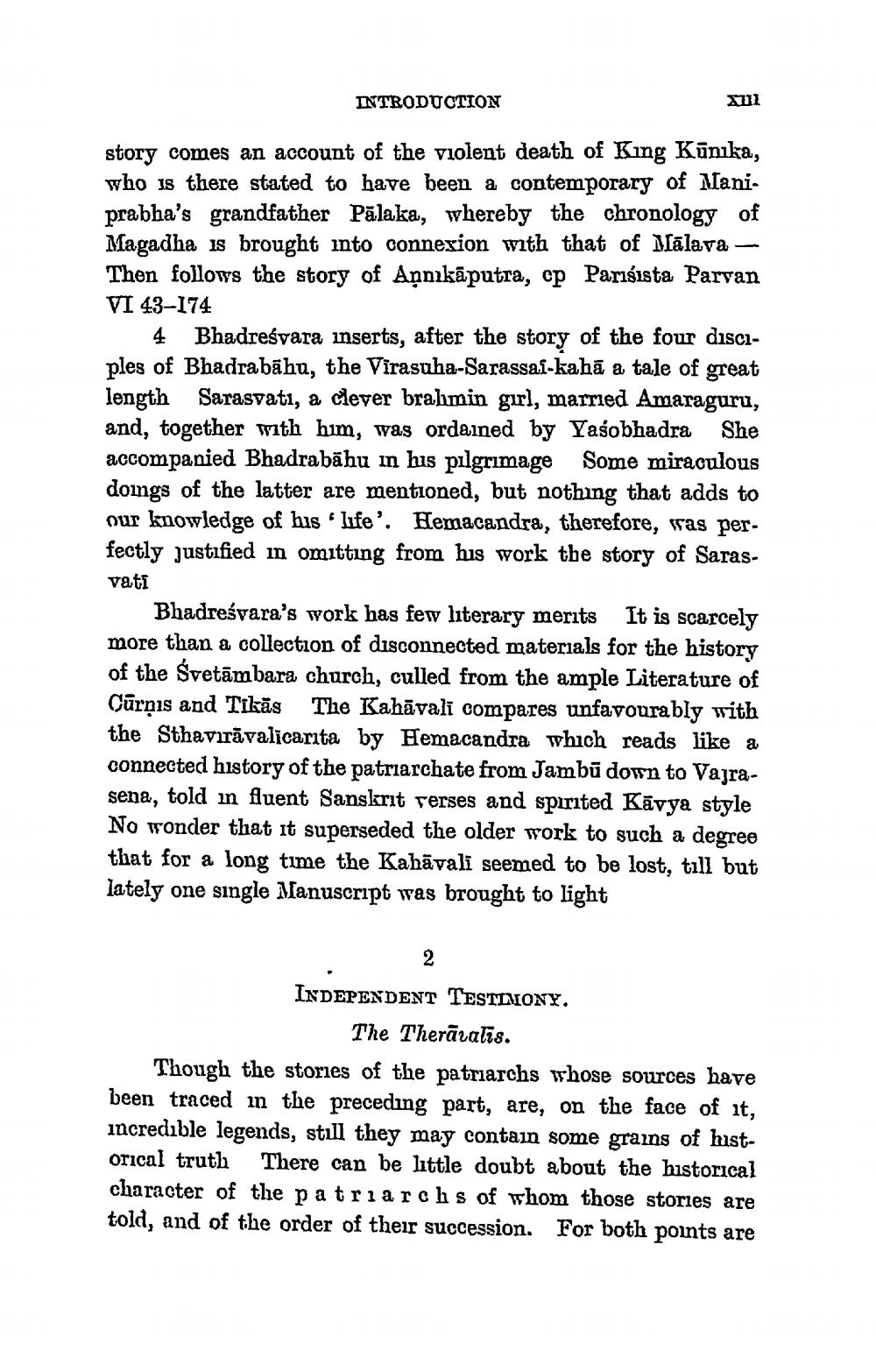________________
INTRODUCTION
2011
story comes an account of the violent death of King Kūnika, who is there stated to have been a contemporary of Maniprabha's grandfather Pālaka, whereby the chronology of Magadha is brought into connexion with that of Malaya - Then follows the story of Aạnikāputra, cp Parisista Parran VI 43-174
4 Bhadreśvara inserts, after the story of the four disciples of Bhadrabāhu, the Virasaha-Sarassai-kahā a tale of great length Sarasvati, a clever brahmin girl, married Amaraguru, and, together with him, was ordained by Yasobhadra She accompanied Bhadrabāhu in his pilgrimage Some miraculous domngs of the latter are mentioned, but nothing that adds to our knowledge of his life'. Hemacandra, therefore, was perfectly justified in omitting from his work the story of Sarasvati
Bhadreśvara's work has few literary merits It is scarcely more than a collection of disconnected materials for the history of the Svetāmbara church, culled from the ample Literature of Cūrşıs and Tikās The Kahāvali compares unfavourably with the Sthavirāvalicarita by Hemacandra which reads like a connected history of the patriarchate from Jambū down to Vajrasena, told in fluent Sanskrit verses and spirited Kávya style No wonder that it superseded the older work to such a degree that for a long time the Kahāvalī seemed to be lost, till but lately one single Manuscript was brought to light
2 INDEPENDENT TESTIMONY.
The Therāralis. Though the stories of the patriarchs whose sources have been traced in the preceding part, are, on the face of it, incredible legends, still they may contain some grains of historical truth There can be little doubt about the historical character of the patriarchs of whom those stories are told, and of the order of their succession. For both points are




